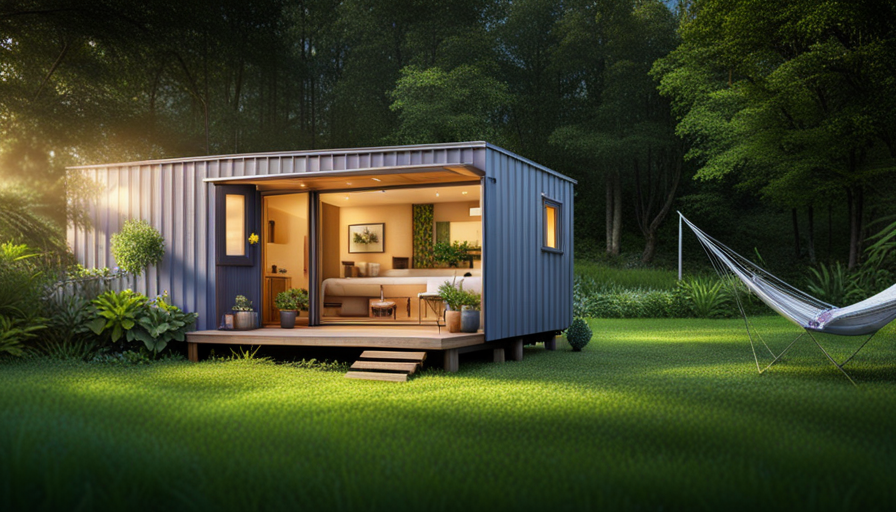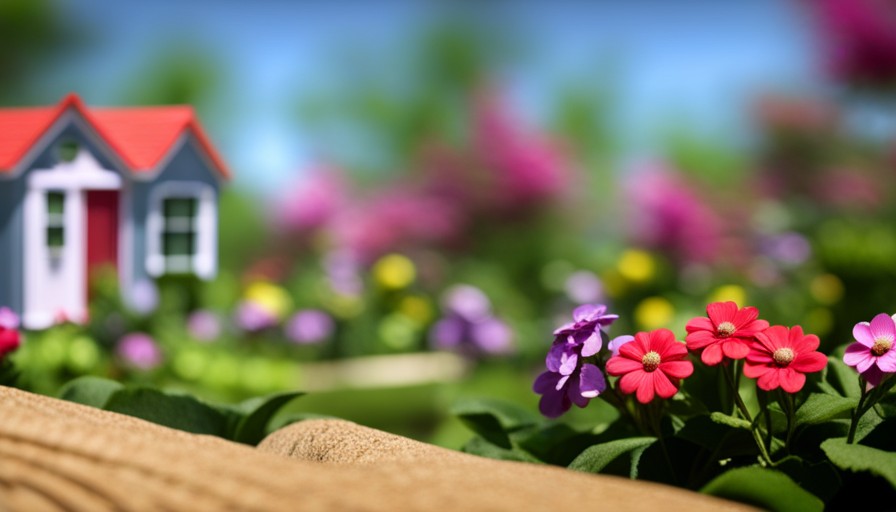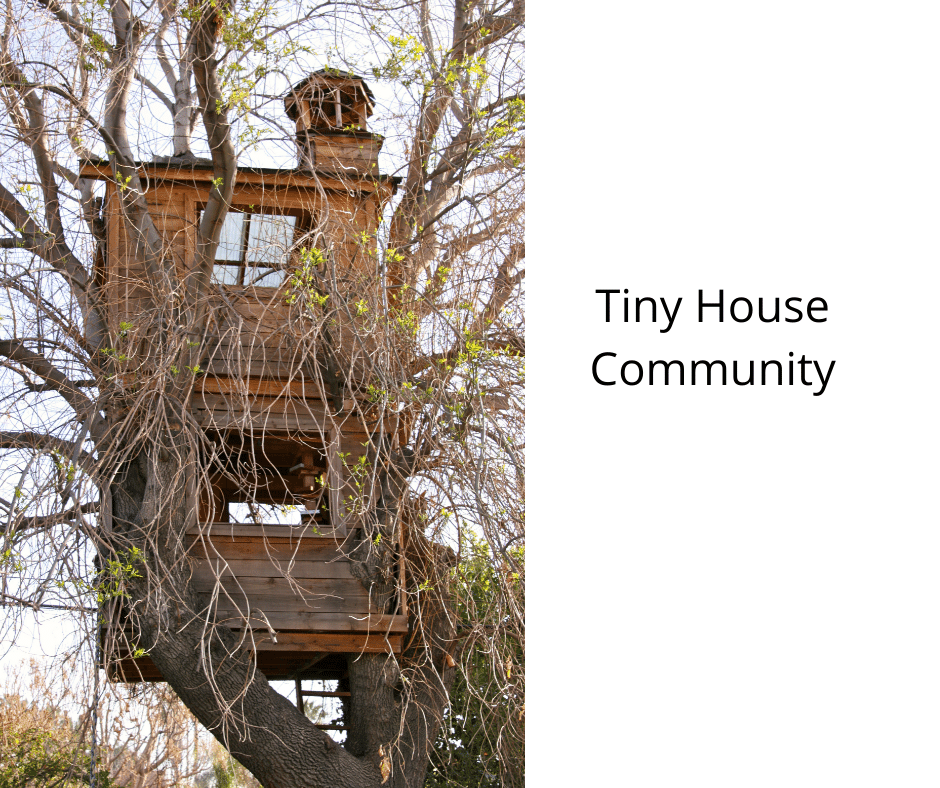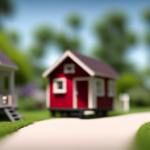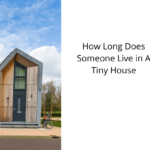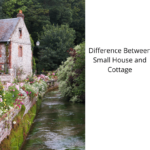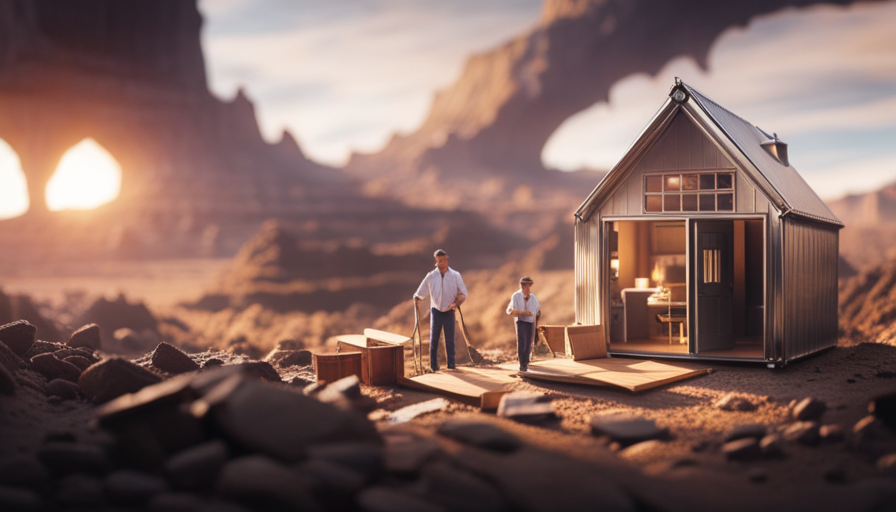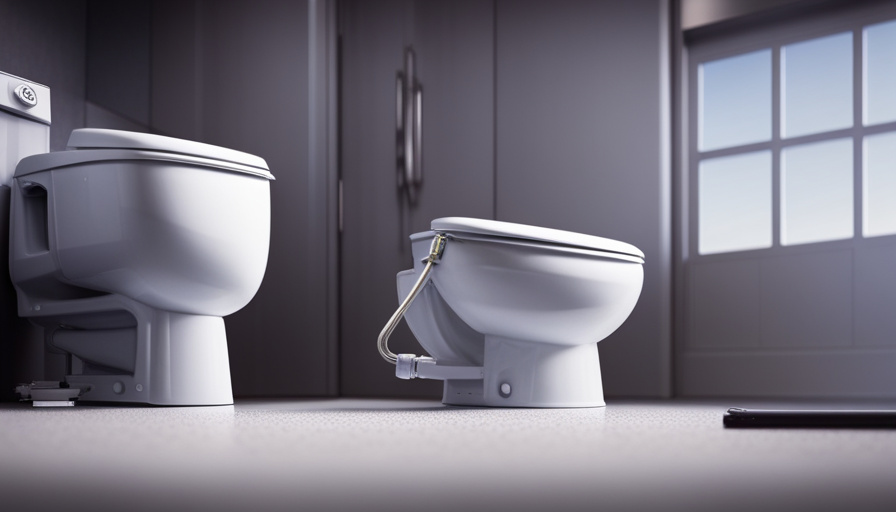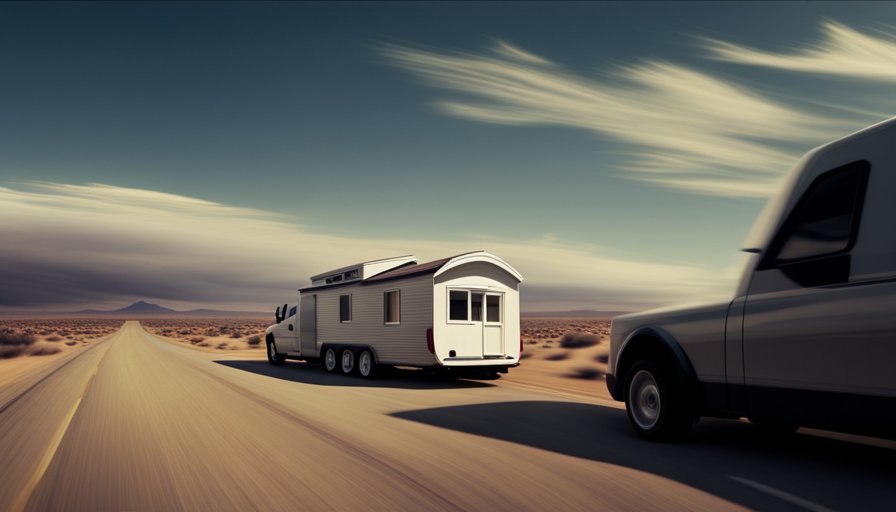Were you aware that over the last forty years, the typical square footage of new single-family homes in the United States has expanded by almost 1,000 square feet? This astonishing fact underscores the increasing preference for spacious living. However, what about people opting for a more minimalist lifestyle? In this article, I’ll explore the concept of tiny houses and the reasons behind their rising popularity among people looking for a simpler, eco-friendlier way of living.
A tiny house is not simply a small dwelling; it is a lifestyle characterized by compact size, minimalist design, and a conscious effort to reduce one’s carbon footprint. These homes typically range from 100 to 400 square feet, providing just enough space for the essentials while encouraging a clutter-free environment. With mobility and portability at the forefront, tiny houses offer the freedom to live wherever one desires, whether it be nestled in the mountains or by the seaside.
Join me as we explore the various aspects that define a tiny house, from its customization and off-grid living capabilities to its affordability and environmental sustainability. Discover how this movement is not just about downsizing, but about embracing a community-driven lifestyle focused on simplicity, freedom, and connection to the world around us.
Key Takeaways
- Tiny houses are a popular choice for individuals seeking a simpler, more sustainable lifestyle.
- They range from 100 to 400 square feet, encouraging a clutter-free environment and efficient use of space.
- Tiny houses offer mobility and portability, allowing individuals to live wherever they desire and explore different locations.
- They have off-grid living capabilities, utilizing alternative energy sources and water and waste management systems for a sustainable lifestyle.
Compact Size and Minimalist Design
You’ll appreciate the compact size and minimalist design of a tiny house, as it allows for efficient use of space while maintaining an elegant and refined aesthetic.
Compact living is at the core of the tiny house movement, with these homes typically ranging from 100 to 400 square feet. Every inch is carefully utilized, ensuring that no space goes to waste. This compactness encourages a minimalist lifestyle, where you’re encouraged to declutter and prioritize only the essentials.
The minimalist design of a tiny house is characterized by clean lines, simple aesthetics, and a focus on functionality. It promotes a sense of tranquility and simplicity, allowing you to live with less and focus on what truly matters.
Transitioning into the next section about mobility and portability, the compact size of a tiny house also offers the advantage of being easily transportable to different locations.
Mobility and Portability
When it comes to tiny houses, one of the key points to consider is their ability to be towed or moved. This mobility allows for the flexibility to live in different locations, providing a sense of freedom and adventure.
Being able to easily transport your home opens up a world of possibilities, whether it’s exploring new cities or embracing a nomadic lifestyle.
Ability to tow or move the house
Imagine the freedom and excitement of being able to hitch up your tiny house and take it on countless adventures. The ability to tow or move a tiny house is one of its most appealing features. Here are three reasons why:
-
Towing limitations: Unlike traditional homes, tiny houses can be easily towed by a standard truck or SUV. This means you have the flexibility to explore different areas without the need to find accommodation or worry about booking hotels.
-
Parking regulations: Tiny houses are often classified as recreational vehicles, allowing them to be parked in RV parks and campgrounds. This opens up a world of possibilities for where you can park your tiny house, from scenic national parks to bustling cities.
-
Freedom to change locations: With a towable tiny house, you have the freedom to live in different locations without being tied down to a specific area. Whether you want to experience life in the mountains, by the ocean, or in a bustling city, your tiny house can easily go wherever you desire.
The ability to tow or move your tiny house provides immense flexibility and opens up a world of opportunities to explore new places and live life on your own terms.
Now let’s delve into the next section about the flexibility to live in different locations.
Flexibility to live in different locations
Feeling like a modern-day nomad, you can easily pick up and move your tiny home to any location that suits your fancy. The flexibility to live in different locations is one of the major advantages of owning a tiny house.
Not only does it allow you to explore new places and experience different cultures, but it also has financial implications. By being able to move your house, you can save on rent or mortgage payments, as you can park your tiny home on a friend’s or family member’s land. However, it’s important to be aware of legal regulations regarding where you can park your tiny home. Some areas have specific zoning laws or restrictions on tiny homes, so it’s crucial to do your research beforehand.
Now, let’s delve into the exciting world of customization and personalization.
Customization and Personalization
To truly make a tiny house your own, you can customize and personalize it in countless ways. One of the key aspects of customization is custom furniture. With limited space, it’s essential to have furniture that’s not only functional but also fits perfectly in the tiny house layout.
From built-in storage solutions to multipurpose furniture pieces, the options are endless. Additionally, interior design plays a crucial role in personalization. You can choose a specific theme, color scheme, or style that reflects your personality and preferences. Whether you prefer a minimalist, rustic, or modern look, you have the freedom to create a space that feels like home.
Now, let’s explore the next section about ‘off-grid living capabilities’ and how tiny houses provide self-sufficiency and sustainability.
Off-Grid Living Capabilities
Off-grid living capabilities in tiny houses include the use of alternative energy sources, efficient water management systems, and sustainable waste management solutions.
As an advocate for sustainable living, I’ve extensively researched and implemented these off-grid technologies in my own tiny house. By harnessing solar or wind power and using rainwater collection systems, I’m able to live completely off the grid, reducing my environmental impact and reliance on traditional utilities.
Additionally, I’ve implemented composting toilets and greywater recycling systems to manage waste in a sustainable and eco-friendly manner.
Use of alternative energy sources
Although small in size, tiny houses are powered by alternative energy sources, allowing homeowners to reduce their ecological footprint while embracing a sustainable lifestyle. These homes often utilize renewable energy options such as solar panels, wind turbines, and even micro-hydro systems to generate electricity. By harnessing the power of the sun, wind, or water, tiny house owners can enjoy a self-sufficient and off-grid living experience.
Additionally, energy-efficient appliances are commonly used in these homes to further minimize energy consumption. LED lighting, low-flow fixtures, and energy-saving appliances are all popular choices for tiny house owners. The combination of alternative energy sources and energy-efficient appliances ensures that tiny houses are not only eco-friendly but also cost-effective to operate.
With their reliance on alternative energy sources, tiny houses exemplify the potential for sustainable living. As we transition to the next section on water and waste management systems, it is important to note that these homes prioritize resource conservation in every aspect of their design.
Water and waste management systems
Water and waste management systems in tiny houses include composting toilets, rainwater harvesting systems, and greywater recycling, creating a closed-loop system that maximizes resource efficiency. These systems not only promote water conservation but also ensure proper waste disposal in an environmentally friendly manner.
Composting toilets use organic materials to break down waste, producing nutrient-rich compost that can be used in gardens.
Rainwater harvesting systems collect rainwater, reducing reliance on municipal water supplies and conserving this precious resource.
Greywater recycling treats and filters wastewater from sinks, showers, and laundry, allowing it to be reused for non-potable purposes like irrigation.
Implementing these water and waste management systems in tiny houses not only reduces the ecological impact but also offers greater self-sufficiency. Transitioning into the next section about affordability and financial freedom, these systems also contribute to minimizing ongoing costs and providing a sustainable lifestyle.
Affordability and Financial Freedom
With the potential to unlock financial freedom, living in a tiny house is like holding the key to a treasure chest of affordability. Tiny houses offer a unique solution to the ever-growing problem of affordable housing, allowing individuals to own their own homes without the burden of a hefty mortgage. By opting for a minimalist lifestyle, homeowners can significantly reduce their expenses and achieve financial independence. Not only do tiny houses require less money to build and maintain, but they also offer the opportunity to downsize and simplify one’s life. To illustrate the financial benefits of tiny house living, consider the following table:
| Expense | Traditional House | Tiny House |
|---|---|---|
| Mortgage | $1,500 | $0 |
| Utilities | $300 | $50 |
| Maintenance | $200 | $50 |
| Total Monthly | $2,000 | $100 |
As the table demonstrates, living in a tiny house can save individuals a significant amount of money each month. This newfound financial freedom allows for a more secure and fulfilling lifestyle. Transitioning to the next section about environmental sustainability, tiny houses offer more than just financial benefits.
Environmental Sustainability
To truly understand the impact of living in a tiny house on the environment, you must consider the ways in which your lifestyle choices can contribute to sustainability. When it comes to reducing our carbon footprint, tiny houses are a game-changer. Their small size means less construction materials and energy required for heating and cooling.
Additionally, many tiny houses are built using sustainable materials and incorporate energy-efficient appliances and systems. This combination of factors significantly reduces the environmental impact of living in a tiny house.
Furthermore, living in a tiny house encourages a minimalist lifestyle, which promotes conscious consumption and waste reduction. By embracing a smaller living space, individuals can focus on sustainable choices and make a positive impact on the environment.
Transitioning into the subsequent section about ‘community and lifestyle,’ it’s important to recognize that tiny houses also foster a sense of community and promote a more connected way of living.
Community and Lifestyle
Now that we’ve explored the environmental sustainability aspect of tiny houses, let’s dive into the community and lifestyle they offer.
One of the most remarkable aspects of living in a tiny house is the strong sense of community engagement it fosters. Because tiny houses often occupy small plots of land or are part of tiny house communities, residents are encouraged to interact with their neighbors and build meaningful connections.
This sense of community not only creates a supportive network but also has a significant social impact. People living in tiny houses often report feeling a stronger sense of belonging and purpose, as they’re part of a like-minded community that values simplicity and sustainable living.
This social impact can extend beyond the tiny house community, inspiring others to adopt a more minimalistic and environmentally conscious lifestyle.
Frequently Asked Questions
How much does a tiny house typically cost?
Tiny houses, like hidden treasures waiting to be discovered, can vary greatly in cost. Numerous factors influence the price, such as size, materials, and location. Financing options, including loans and personal savings, can make owning a tiny house more accessible.
It’s important to consider all cost factors, such as permits, utilities, and maintenance, when budgeting for a tiny house. Exploring different financing options can help make your tiny house dreams a reality.
Can I legally live in a tiny house permanently?
Yes, it’s possible to legally live in a tiny house permanently. However, there are important legal considerations to keep in mind. Zoning and building codes vary by location, so it’s crucial to research and comply with local regulations. Additionally, long-term sustainability of living in a tiny house involves factors like access to utilities, waste management, and community integration. It’s important to carefully plan and ensure that your tiny house meets all legal requirements for permanent living.
Are tiny houses built to withstand extreme weather conditions?
Yes, tiny houses are built to withstand extreme weather conditions. Building codes require them to be constructed with durable materials and to meet safety standards.
To ensure insulation, there are various options available such as spray foam insulation, double-pane windows, and weatherproofing techniques. By employing these measures, tiny houses are designed to provide protection and comfort even in harsh climates.
It’s crucial to consider these factors when building or purchasing a tiny house for permanent living.
What are the most common challenges of living in a tiny house?
Living in a tiny house presents several challenges. Financial considerations are a major factor, as the cost of building and maintaining a tiny house can be high.
Space limitations also pose a challenge, as it requires careful organization and creativity to maximize the limited square footage.
Storage can be a struggle, and finding ways to fit all your belongings can be a constant battle.
However, with proper planning and a minimalist mindset, these challenges can be overcome to create a comfortable and fulfilling tiny house lifestyle.
Are there any restrictions on where I can park or place a tiny house?
Yes, there are restrictions on where you can park or place a tiny house. These restrictions are typically governed by parking regulations and zoning restrictions. It’s important to research and understand these regulations before deciding on a location for your tiny house.
Many areas have specific zoning requirements for tiny houses, such as minimum lot size or proximity to existing structures. Additionally, some municipalities may have restrictions on parking tiny houses on public streets or in certain neighborhoods.
Conclusion
In conclusion, the definition of a tiny house encompasses a world of contradictions. It’s ironic how something so small can provide such immense freedom and flexibility.
With its compact size and minimalist design, a tiny house offers a sense of liberation from the burdens of excess. Additionally, its mobility and portability allow for a truly nomadic lifestyle. Furthermore, the ability to customize and personalize every inch of space creates a unique and tailored living experience. Who knew that living off the grid could be so empowering?
And let’s not forget the financial freedom and environmental sustainability that come hand in hand with this lifestyle. Lastly, the sense of community and belonging that thrives within the tiny house movement is truly remarkable.
So, while it may be tiny in size, its impact is anything but.
Hi, I’m Emma. I’m the Editor in Chief of Tiny House 43, a blog all about tiny houses. While tree houses are often associated with childhood, they can be the perfect adult retreat. They offer a cozy space to relax and unwind, surrounded by nature. And since they’re typically built on stilts or raised platforms, they offer stunning views that traditional homes simply can’t match. If you’re looking for a unique and romantic getaway, a tree house tiny house might just be the perfect option.
